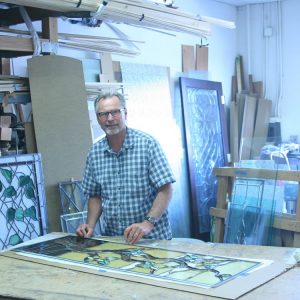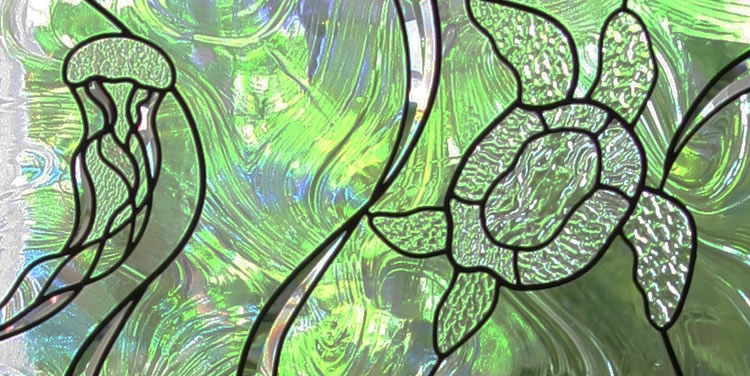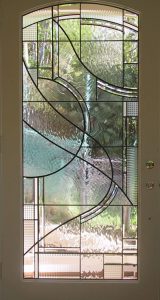Reinterpreting a Medieval Art for the Modern Era
Stained glass may seem like a lost art since its heyday in the Middle Ages. Yet the one-of-a-kind pieces survive today in the windows of cathedrals, homes and businesses enriched with their brilliant color and light. Stained glass artist Greg Atwood of The Glass Spectrum has designed gorgeous art for over 34 years. His patience and precision is evident in colors and details that flow naturally in the designs he creates from a Laguna Niguel studio.
Q: Why use stained glass windows?
A: Back in medieval times, stained glass windows in churches were biblical narratives for the illiterate. For today’s crowd, stained glass windows might provide light to a dark entryway, atmosphere to a business or privacy to a bathroom. It adds a touch of elegance and beauty, say in beveled glass on a door that refracts the colors and light behind it. Frank Lloyd Wright used it in many of his homes. Stained glass is an exquisite form of art and I love creating designs for it.
Q: How did you begin working with stained glass?
A: Originally I was a painting major. My last summer in school I took a stained glass art class and from then on I became extremely involved with it. But really it began in fifth grade when my teacher gave me the encouragement with my very first commission painting a mural on the school room’s wall. I knew right then I wanted to do art. Plus I like to build things with my hands and love the world of color so it’s no wonder I found my way to stained glass.
Q: You were trained by a Laguna stained glass master?
A: Yes, I was very fortunate after graduating from Cal State Fullerton to find myself working with Laguna Beach’s Jos Maes who was very well-known internationally for his incredible stained glass and had many commissions for large church windows. I worked for him for a couple of years, learning so much. We remained long-time friends until his death.
Q: Is creating a design a complicated process?
A: Yes. It’s both an art and a craft that requires a workable design and skills to assemble the piece. It must fit perfectly in the space it’s supposed to go in and if a large piece, able to support its own weight. The smaller pieces of glass that are arranged to form patterns or pictures, held together with strips of lead and supported by a rigid frame, must have the appropriate arrangement so the glass holds up. Therefore there is a certain way it has to be drawn to be able to cut the glass correctly into the desired shape.
Q: Have you had any unusual requests?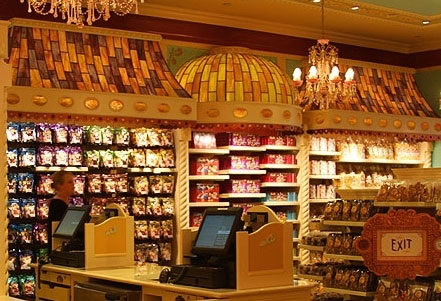
A: Three years ago I was contacted by Disney to do a project for them. They asked me to do big giant hoods for their store, Candy Palace. This was a challenge since curving stained glass isn’t so easy. But I made a series of convex and concave hoods, with one 6’ domed hood. By slumping glass on a mold I was able to make brick pieces that are curved. Not a normal way of handling stained glass but it was very effective.
Q: Your work is much more than just stained glass. It’s an art form.
A: I like to think so. I don’t get involved with the installation. What I do is specialize in custom designs from concept to finished piece. I do a lot of research to create what I feel is something unique for the customer. For instance, if a piece requires a design with a bird, I’ll go on the internet and search out pictures of all kinds of birds in flight at all sorts of angles to get the right look that flows with everything. I also design very simple pieces such as a butterfly. But I’ll create it in such a way that takes this very popular old-time subject matter and use sweeping lines to construct an abstract of the butterfly. My heart and soul goes into my work. It’s what I love to do.
Q: Do you just work with stained glass?
A: I also do painted glass. And I work with all types of glass such as beveled and textured. Textured glass can be quite beautiful because light dancing through it brings hints of colors from the obscured background, adding depth and texture to the design. Beveled glass has straight, symmetrical type lines and I like to use it as well. But I also do a lot of simple glass stuff like plain diamond beveled windows, tabletops, shelving, cabinet doors and mirrors. And even architectural glass such as windbreakers for the patio.
Q: What is the difference from painted and stained glass?
A: The color is actually painted on the glass, whereas stained glass has been colored by adding metallic salts during its manufacture. For the painted glass there are actually two methods. One method is called matting where the whole glass is covered with paint then fired in a kiln. But before it is fired, the powdery substance can be taken off easily and with a very fine brush, make subtle variations in the amount of color to create shadowing, a type of stippling effect. The other technique called tracing, lines are painted in black on the glass before firing and are used for very fine features such as hands and faces.
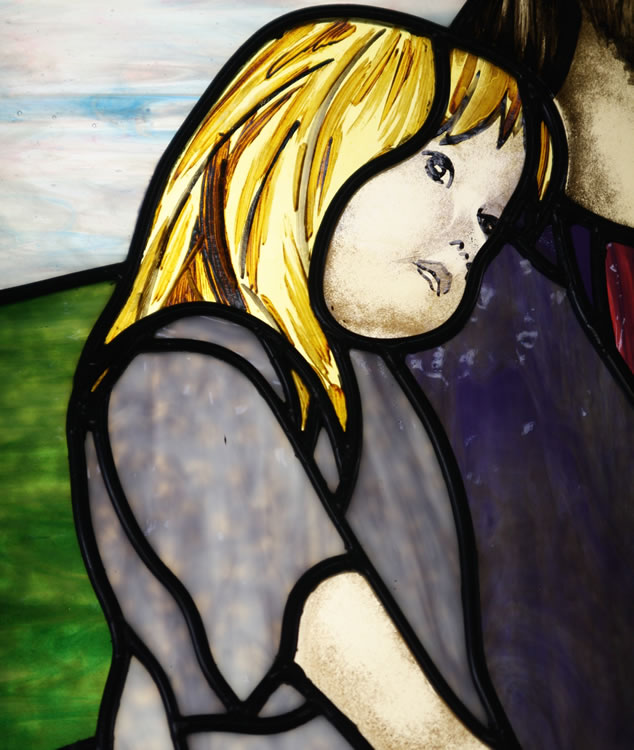
CONTACT INFORMATION
Greg Atwood
The Glass Spectrum
27601 Forbes Road, #40
Laguna Niguel, CA 92677
949-582-5776

